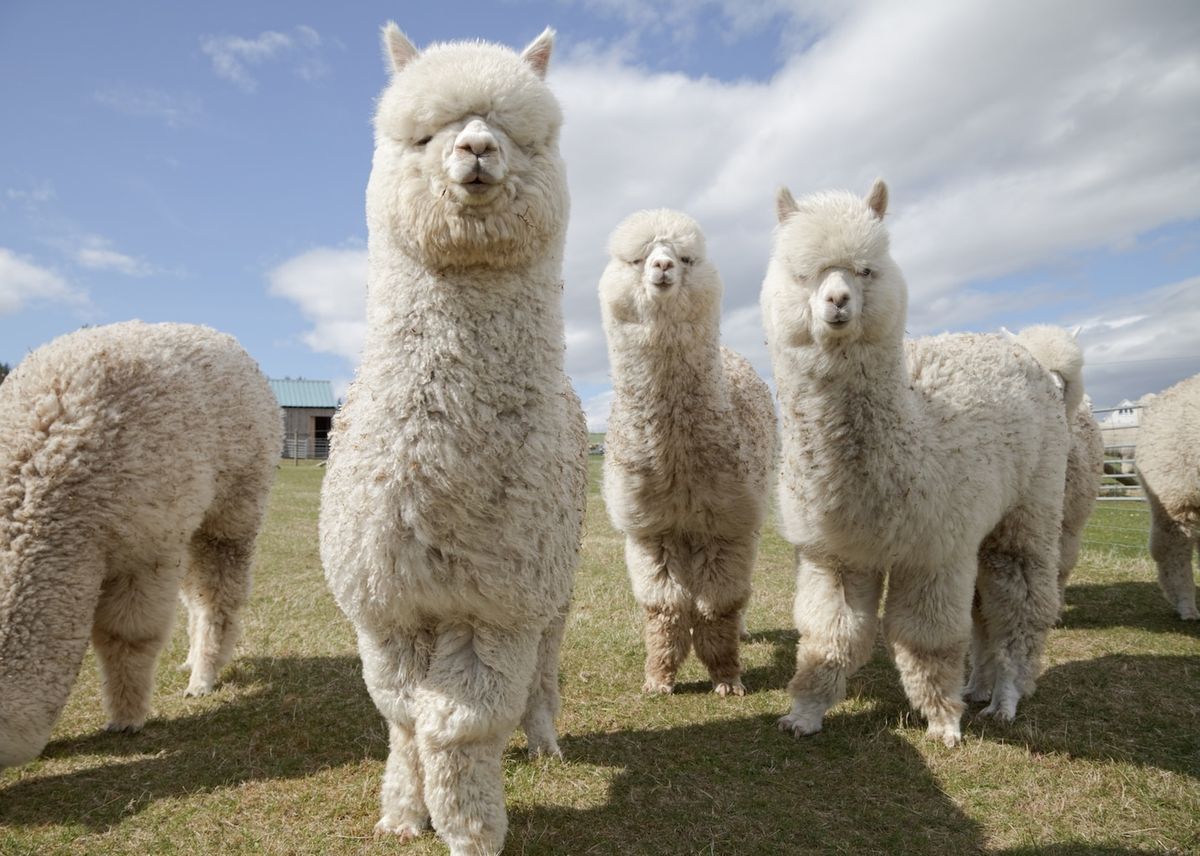
Alpacas are fascinating creatures that have captured the hearts of many. Originating from South America, these fluffy animals are known for their soft, luxurious fleece. But there's more to alpacas than just their wool. Did you know that alpacas communicate through body language and a series of gentle humming sounds? They also have a unique social structure, often forming close-knit herds. Unlike their larger camelid cousins, llamas, alpacas are generally more docile and easier to manage. Whether you're interested in their history, behavior, or quirky traits, these 28 facts about alpacas will give you a deeper appreciation for these charming animals.
Alpacas: The Fluffy Wonders of the Andes
Alpacas, native to South America, are fascinating creatures known for their soft fleece and gentle demeanor. These animals have been domesticated for thousands of years and continue to capture hearts worldwide. Let's dive into some intriguing facts about these charming animals.
-
Alpacas are native to the Andes Mountains in South America, primarily found in Peru, Bolivia, and Chile.
-
There are two breeds of alpacas: Huacaya and Suri. Huacayas have fluffy, crimped fleece, while Suris have long, silky locks.
-
Alpacas are part of the camelid family, which includes llamas, camels, and vicuñas.
-
Unlike llamas, alpacas are not used as pack animals. They are bred primarily for their luxurious fleece.
-
Alpaca fleece is hypoallergenic, making it an excellent choice for people with wool allergies.
-
Their fleece is also water-resistant and flame-resistant, providing natural protection against the elements.
Alpaca Behavior and Social Structure
Alpacas are social animals that thrive in herds. Their behavior and social interactions are both fascinating and complex.
-
Alpacas communicate through body language, ear positions, and vocalizations like humming.
-
They are gentle and curious by nature, often approaching humans out of curiosity.
-
Alpacas have a strong herd instinct and can become stressed if isolated from their group.
-
They establish a social hierarchy within their herd, with dominant individuals leading the group.
-
Alpacas use communal dung piles, which helps reduce the spread of parasites and keeps their living area clean.
Alpaca Care and Maintenance
Taking care of alpacas requires knowledge and dedication. Proper care ensures their health and well-being.
-
Alpacas need regular shearing, usually once a year, to prevent their fleece from becoming too long and matted.
-
They require a balanced diet of hay, fresh grass, and specialized alpaca feed to maintain their health.
-
Alpacas need access to clean, fresh water at all times.
-
Regular veterinary check-ups are essential to monitor their health and prevent diseases.
-
Alpacas are prone to heat stress, so they need shade and cool water during hot weather.
Alpaca Reproduction and Lifespan
Understanding alpaca reproduction and lifespan can help in managing a healthy herd.
-
Female alpacas, called hembras, have a gestation period of about 11.5 months.
-
Baby alpacas are called crias and usually weigh between 15-20 pounds at birth.
-
Crias are typically weaned at around six months of age.
-
Alpacas can live up to 20 years, with some even reaching 25 years in captivity.
-
Male alpacas, known as machos, reach sexual maturity at around two to three years old.
Alpacas in Culture and Economy
Alpacas have played a significant role in the culture and economy of Andean communities for centuries.
-
The Inca civilization highly valued alpacas for their fleece, which was considered a luxury item.
-
Alpaca fleece comes in 22 natural colors, ranging from white to black, with many shades of brown and gray in between.
-
The global alpaca industry is growing, with countries like the United States, Australia, and New Zealand investing in alpaca farming.
-
Alpaca fleece is used to make a variety of products, including clothing, blankets, and accessories.
-
Alpaca farming is considered environmentally friendly, as these animals have a low impact on their grazing land.
-
Alpacas have soft padded feet, which cause minimal damage to the soil compared to hooved animals.
-
Alpaca manure is an excellent fertilizer, rich in nitrogen and other nutrients, making it highly sought after by gardeners.
Alpacas are truly remarkable creatures, offering a blend of beauty, utility, and gentle companionship. Whether you're interested in their luxurious fleece or their endearing personalities, alpacas have something to offer everyone.
Alpacas: A Fascinating World
Alpacas are truly remarkable creatures. From their soft fleece to their gentle nature, they offer so much more than meets the eye. These animals are not just cute and cuddly; they're also eco-friendly and social. Their fiber is highly prized for its warmth and softness, making it a favorite among textile enthusiasts. Alpacas are also known for their unique communication methods, using a variety of sounds to express themselves. Their herd mentality ensures they thrive in groups, making them perfect for small farms and ranches. Whether you're interested in their fiber, their behavior, or just their adorable looks, alpacas have something to offer everyone. So next time you see one, you'll know there's a lot more to these fascinating animals than just their fluffy appearance.
Was this page helpful?
Our commitment to delivering trustworthy and engaging content is at the heart of what we do. Each fact on our site is contributed by real users like you, bringing a wealth of diverse insights and information. To ensure the highest standards of accuracy and reliability, our dedicated editors meticulously review each submission. This process guarantees that the facts we share are not only fascinating but also credible. Trust in our commitment to quality and authenticity as you explore and learn with us.
